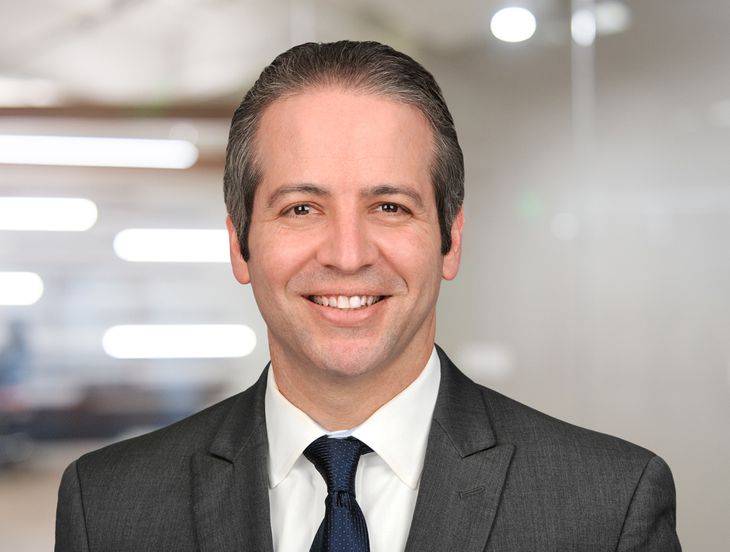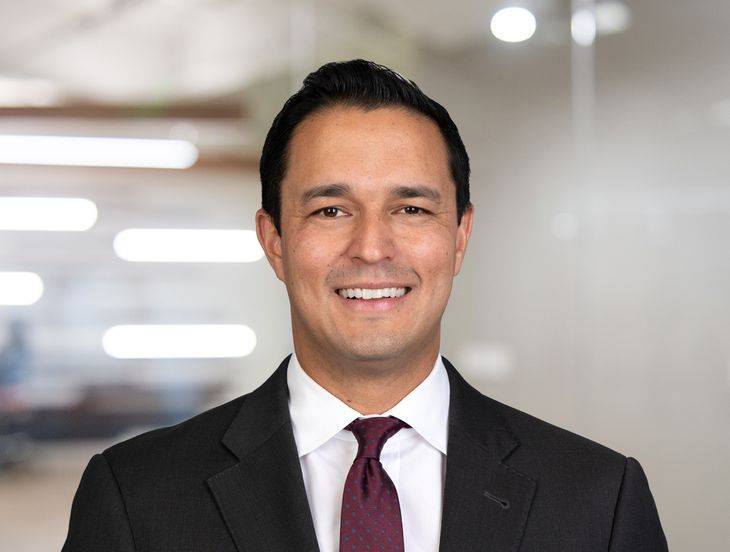California Fitness Facilities Should Follow These 4 Benchmarks To Guide Reopening
Insights
6.11.20
After several months of closures or offering virtual fitness classes, Governor Gavin Newsom announced that California fitness centers can soon begin reopening – so long as they comply with specific modifications. The California Division of Occupational Safety and Health (Cal/OSHA) and the California Department of Public Health (CDPH) recently issued guidance to help fitness facilities safely reopen. The new guidance recommends that fitness facilities be permitted to reopen no sooner than June 12.
However, it is still remains up to local public health departments to determine when fitness centers may reopen in their county. Sonia Angell, Director of the California Department of Public Health, recently made an announcement that “as we continue to release guidance on how different sections can reopen with modification, it is important to remember guidance doesn’t mean ‘go.’” Before reopening your fitness facility, you should consider the following “benchmarks.”
Benchmark One: Prepare A Worksite Specific Plan
The first step on the path to reopening is to prepare a worksite-specific plan. The Cal/OSHA-CDPH guidance requires all fitness facilities to perform a comprehensive risk assessment before developing and implementing a worksite specific plan.
Your worksite specific plan should cover employee training, control measures and screening for COVID-19, cleaning and disinfecting protocols, and physical distancing guidelines. There are additional requirements to consider if your facility is reopening restrooms and showers, swimming pools, and/or food services and retail.
Reopen In Phases
We recommend fitness facility reopen in phases. For example, phase one would include limited fitness center hours with fewer classes offered than normal. If possible, fitness class should continue to be provided remotely for those members who do not feel comfortable returning to physical classes. All additional amenities including locker rooms, showers, swimming pools, spa services, childcare, family programing, food service, and retail should remain closed. Phase two would include increased number of class and expanded hours. Phase three would allow for the gradual reopening of additional amenities provided the fitness facility complies with the Cal/OSHA-CDPH guidance, California state guidance, and local orders.
Modify Fitness Facility Hours, Maximum Capacity, And Class Schedules
In all phases, however, you should make modifications to your hours, class schedules and maximum capacity and class sizes. The Cal/OSHA-CDPH guidance requires fitness facilities to limit gym capacity and class attendance so that all members can maintain a minimum of six feet of distance at all times. You should stagger fitness classes from each other to ensure minimal person-to-person contact between members arriving for class and leaving fitness classes. You should also consider offering classes exclusively for vulnerable employees (those above age 65 and those with chronic health conditions).
Benchmark Two: Ramp Up Health And Safety Protocols
While not unique to the fitness industry, you will need to implement policies for social distancing and sanitation that comply with the Cal/OSHA-CDPH guidance. You will need to disinfect commonly used surfaces and high traffic areas throughout the day. Your fitness facility should provide disinfectant wipes throughout the premises and implement a policy that all members are to wipe down exercise machines and equipment before and after use. If members are unable or unwilling to disinfect equipment, you should provide them with a “ready to clean” tag that they can place on the equipment after use. This will notify employees and members that the equipment must be disinfected before the next use.
Implement A Reservation System And Contactless Check-In
You should also implement a reservation system to limit the number of individuals in your facility. This reservation system can be utilized to send members important information and changes to the fitness center. It can be used to contact members before their class to provide them with an over-the-phone or online health screening survey.
The online reservation system will also be useful for keeping track of members that attend each class. In the case of a positive COVID-19 test, it will be necessary to engage in contact tracing and notify the other members who were in the class.
Once members arrive at the fitness facility, you should check-in members via contactless check-in.
Implement Health Screenings And/Or Temperature Checks
Cal/OSHA-CDPH guidance recommends that employers provide temperature and/or symptom screenings for employees and members upon entering the fitness facility. For select California cities and counties, this may already be required under a public health order.
We recommend using a contactless thermometer to check employees and members’ temperatures at the door. Depending on your county’s local public health order, you can administer health screenings at the door, over the phone, or via an online survey sent out in advance. Make sure to contact your Fisher Phillips attorney and subscribe to Fisher Phillips’ alert system for the most up-to-date information on local public health orders.
Implement Physical Changes In Your Fitness Facility
You will need to assess the current layout of your facility and make modifications so that social distancing can be maintained at all time. You should start by removing or blocking any communal furniture.
You should also reorganize the facility to ensure equipment is at least six feet apart. If equipment cannot be moved, then you must block it from being used. You should use tape or other material to mark a six-foot distance between each exercise station. The same should be done to mark a six-foot distance on the ground to notify members where to stand while waiting at the front door, reception, or for their fitness class to begin.
You should restructure classes to minimize or eliminate the use of shared equipment. Your fitness center should implement a check-out system for small equipment and accessories such as exercise bands, ropes, mats, and foam rollers. Upon return, you should have a protocol in place to clean and disinfect these items before the next use. Further, coaches and trainers should reconfigure their classes to minimize rotation of exercise stations and allow for social distancing.
Additionally, you will need to post signage at all entrances and in high-visible location to remind employees and members that they should practice physical distancing, use face masks, frequently wash their hands, and practice basis prevention measures. You should also post signage on the entrance to the locker rooms, restrooms, and showers that describes the cleaning schedule. Finally, you should post your worksite-specific protocol at all entrances to the fitness center. Your business may also need to post county-specific reopening plans. Be sure to check your local public health order or contact your Fisher Phillips attorney for more information about required signage.
Benchmark Three: Train Employees And Provide Information to Members
Prior to reopening your fitness facility, you should train employees on your worksite-specific plan as well as any new policies and protocols in place. We suggest holding a paid virtual meeting to update employees on the changes. You should also provide employees with a copy of your worksite-specific protocol.
Further, you should trained employees on COVID-19 prevention, self-screening in accordance with CDC guidelines, proper use of personal protective equipment, the importance of not coming to work if they or anyone in their household has symptoms or has been diagnosed with COVID-19, and when to seek medical attention. In accordance with Cal/OSHA and CDC guidance, you should also train employees on the manufacturer’s instructions for the safe use of cleaning chemicals. We recommend training employees to observe how well members are complying with the new protocols. Employees should feel free to openly communicate with managers without the fear of reprisal or retaliation.
You should also communicate new policies and procedures with your members via your website, over email, and through social media. You should send a copy of the worksite-specific protocol to all members. We recommend asking members to bring their own pre-filled water bottle, mask, gloves, towels, and any personal equipment such as resistance bands and mats to class. You should provide masks and gloves to all members upon entry free of charge.
Benchmark Four: Monitor And Update Policies And Procedures
Your fitness facility must regularly evaluate compliance with the plan to identify and correct any deficiencies. We recommend asking employees to fill out an online survey about what policies are working well and what should be changed.
You should also create a plan for how you would respond if an employee or member is diagnosed or receives a positive test result for COVID-19. To do so, we suggest setting up an online survey that employees and members can fill out that will immediately alert the fitness facility. Upon notification, the fitness center can take remedial action. First, you should instruct the infected individual to stay at home until they have been cleared by a health official. You should engage in contact tracing and inform employees and members that may have been near the infected individuals. Be careful not to violate the infected employee’s privacy right while informing other that they may have encountered the virus. You can use this model notification letter to inform your employees of the possible exposure. Finally, your fitness facility should be immediately closed to allow for cleaning and disinfecting before reopening.
Ready To Reopen!
While this article does not cover all of the requirements in the Cal/OSHA-CDPH guidance, it is meant to provide fitness centers with practical solutions to implementing the guidance and ensure the health and safety of employees and members. We expect to see additional guidance as California moves into Stage 3 of the Resilience Roadmap. Once your fitness facility has successfully met the above benchmarks, complied with the Cal/OSHA-CDPH guidance, and is permitted to reopen by a local public health order, you will be ready to reopen.
Fisher Phillips will continue to monitor the rapidly developing COVID-19 situation and provide updates as appropriate. Make sure you are subscribed to Fisher Phillips’ Alert System to get the most up-to-date information. For further information, contact your Fisher Phillips attorney or any member of our Post-Pandemic Strategy Group Roster. You can also review our FP BEYOND THE CURVE: Post-Pandemic Back-To-Business FAQs For Employers and our FP Resource Center For Employers.
This Legal Alert provides an overview of a specific developing situation. It is not intended to be, and should not be construed as, legal advice for any particular fact situation.
Related People
-
- Todd B. Scherwin
- Regional Managing Partner
-
- Adam F. Sloustcher
- Regional Managing Partner

